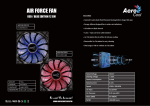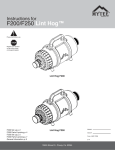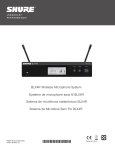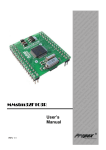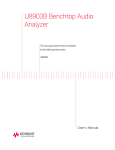Download NEW!! 64bit Linux Easy to Clustering
Transcript
NEW!! 64bit Linux Easy to Clustering The most suitable for clustering • Speed: 131.3G flops (4×Grape6 VLSI Chips 6Pipeline per chip). • Memory size: 262,144 particle. (18Mbit Burst-SRAM×8) • OS( prepared by users) : 64 bit Calculation! 1. Linux 2.6.9 (RedHat ELV4) 2. Linux 2.6.9 (Fedora Core 3, x86_64) *If you succeed in using other version , please inform us. Such information will help other users. • Attached Application Software: C language, Fortran language interface library. (CD-ROM) • Host computer: Intel® Xeon CPU and Intel® E7525 chip set are suitable. • Dimension : 33mm(w) x 313mm(d) x108mm (h), • Interface : Standard 64bit/100MHz or 133MHz full PCI-X Cooling fan : 1.8m3/min 2 PCI slot occupied A) You should set BIOS to make PCI 65cfm (Please consult with the computer manufacturer.) Remarks; Micro GRAPE(MG6Af) have a big cooling fan on the boards. But BL4/BLX64 are not attached.on the board. Thus it needs a extra cool down fan near the board in the box. *It is prepared by yourself Please make sure the surface temperature of heat sink lower than 50℃. Power consumption : DC12V 5A, ATX power supply * Documentation: User's Mamual: Library: Install Guide manual_blx64_ g6auser install * The difference between Micro GRAPE and GRAPE6-BL4, GRAPE6-BLX64: Interface Linux Peak Speed actual speed Particale memory MG6Af PCI 32bit Linux 125G 90G 126K BL4 PCI 32bit 131.6G 100G flops 256K BLX64 PCI-X 64bit 131.6G 125G flops 256K BLX64 Library is included JP-buffering routine. However BL4 and MG6Af are not included in the library. Refer to above User’s Manual for BLX64. Grape-BLX64 is a upgrade model of MicroGrape. It is special for built-in cluster. Grape-BL4 was developed for joint research of the FIRST project (the Origin of FIRST Generation Objects by HMCS-E) with Center for Computational Sciences University of Tsukuba. It is 30 percent faster than Micro GRAPE by using 64bit PCI-X interface. first cluster First Project first project Tsukuba University Web Grape was developed by receiving technology of University of Tokyo




